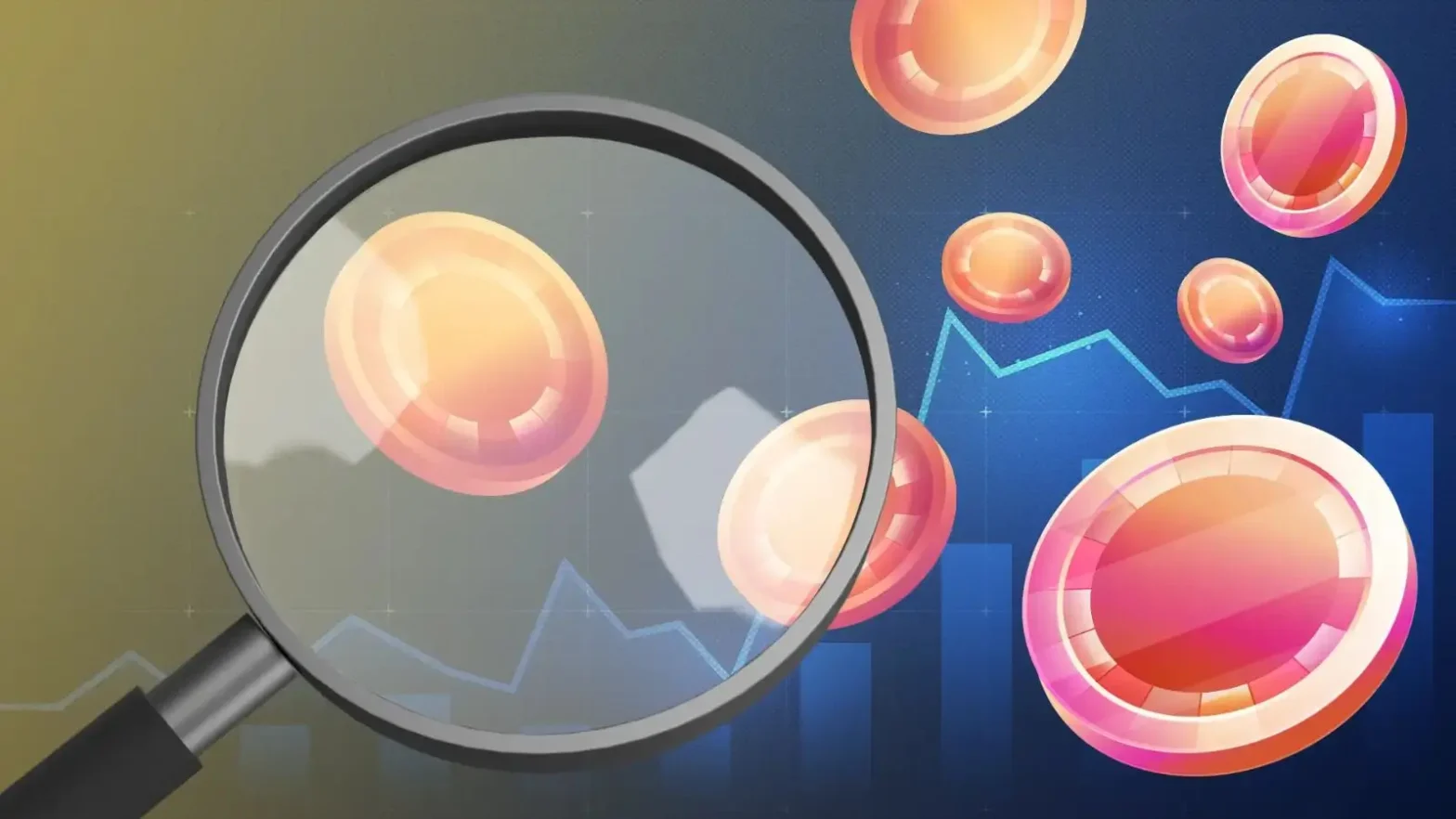The crypto world is full of opportunities — and pitfalls. With thousands of new tokens and blockchain projects launching every year, it’s easy to be swept up in the hype. It is for this reason we want to talk about how to vet a new crypto project before you decide to invest.
Flashy websites, grand promises, celebrity endorsements, and buzzwords like “DeFi,” “layer-2,” or “AI-powered” can lure even seasoned investors into poorly thought-out ventures.
The truth is, many crypto projects are more smoke than substance — some are outright scams, while others simply lack long-term viability.
This is why knowing how to research a crypto project before you invest isn’t just a nice-to-have skill — it’s essential. Just as you wouldn’t pour money into a business without checking its fundamentals, you shouldn’t invest in a token without understanding what’s behind it.
In this guide, we’ll take you step-by-step through the due diligence process that smart investors use to evaluate crypto projects.
Whether you’re brand new to the space or looking to sharpen your investment strategies, this post will arm you with a research framework that can save you money, stress, and regret — while helping you spot the gems worth holding onto.
Why Vetting a Crypto Project is No Longer Optional

In a market overflowing with dazzling promises, meme hype, and anonymous developers, the need to vet a crypto project thoroughly is no longer just a best practice—it’s survival.
Whether you’re investing $50 or $50,000, you deserve to know exactly what you’re getting into.
This guide walks you through a pro-level due diligence framework used by institutional investors, VC funds, and experienced whales. From whitepaper analysis to tokenomics red flags, this isn’t about “gut feeling”—it’s about systematic research that cuts through the noise and exposes real value.
Compare: What Are the Best Trading Hours for Cryptocurrency?
Understand the Problem the Project Claims to Solve
Before you even look at the token, team, or community, ask this foundational question:
“What problem is this project solving, and who truly needs this solution?”
The crypto space is bloated with redundant platforms. If the project doesn’t solve a real-world or industry-specific problem better than competitors—or if it’s a vague attempt at being “the next Ethereum” without a unique edge—you should be skeptical.
- Read the project’s whitepaper and try to explain the idea back to yourself.
- Compare the problem to existing solutions (blockchain and non-blockchain).
- Look for clarity and practicality, not buzzwords or futuristic dreams.
Dissect the Whitepaper Like a Research Analyst
The whitepaper is not marketing material; it’s the technical and philosophical backbone of the project. You’re looking for substance and strategic depth across the following:
- Executive Summary: Is the problem and proposed solution clearly outlined?
- Token Utility: What real purpose does the token serve within the ecosystem?
- Technology Stack: What is it built on? Is it a fork of another chain?
- Governance Model: Who makes decisions and how?
- Roadmap: Are the timelines realistic or overly ambitious?
🚩 Red Flags: Whitepapers that are vague, copied, too short, lack tokenomics, or are filled with non-technical marketing fluff.
Examine the Founding Team and Developers

One of the most common rug-pull signals is an anonymous or unverifiable team. While anonymity isn’t inherently bad, it raises the bar for proof.
- Do they have verifiable LinkedIn or GitHub profiles?
- Have they worked on previous crypto or tech products?
- Are there advisory board members with a solid reputation?
Use tools like Crunchbase, Twitter, X (Twitter), and GitHub to validate claims. Cross-check profile pictures using reverse image searches (fake teams often use stock photos).
✅ Bonus: If the devs are active in GitHub and responsive to community bug reports or feedback, that’s a green flag.
Analyze the Tokenomics in Detail
Many failed projects tank because of unsustainable tokenomics—either the supply is inflationary or the founders control too much of the pie.
Here’s what to evaluate:
- Total Supply vs Circulating Supply
- Token Allocation: What percentage goes to the team, VC investors, public sale, community?
- Vesting Schedule: Are team tokens locked for long enough to prevent early dumping?
- Burn Mechanisms: Is there a deflationary model to protect long-term holders?
🚩 Red Flags: Instant liquidity unlocks, more than 40% controlled by insiders, unclear token use case, and “mint at will” smart contracts.
Gauge the Strength of the Community (Beyond the Numbers)

Follower count means nothing if engagement is fake or botted. You need to go deeper.
- Are people discussing the technology or just hyping price action?
- Is the Telegram/Discord community moderated and transparent?
- Do developers and moderators respond to tough questions or ban critics?
Check sentiment using platforms like Reddit, Twitter (X), and even YouTube. A real community asks hard questions and cares about the product—not just the token price.
✅ Tip: High engagement + developer responsiveness = real community health.
Scrutinize the Smart Contract and Audit History
If you’re not tech-savvy, use trusted third-party sources to evaluate smart contract security.
- Has the project been audited by reputable firms like CertiK, Hacken, or Trail of Bits?
- Can you view the contract code on Etherscan, BscScan, etc.?
- Are there backdoors like “admin functions” that allow infinite minting or blacklisting?
🚩 If there’s no audit, no contract address, or unverifiable audit certificates, stay away.
Study Market Listings and Liquidity Sources
Being listed on Tier-1 centralized exchanges (like Coinbase, Binance, Kraken) often indicates legitimacy, but for new projects, you’ll likely find them first on DEXs.
Ask:
- Is the token listed on Uniswap, PancakeSwap, or other reputable DEXs?
- Is there locked liquidity for a defined period (check via platforms like Unicrypt)?
- Who controls the liquidity pool—can they remove it overnight?
✅ Liquidity locks and multi-sig wallets add trust. Otherwise, it could be a rug pull in disguise.
Check for Legal and Regulatory Alignment
This is often overlooked. U.S.-based investors face SEC scrutiny, especially for projects that resemble unregistered securities.
- Is the token categorized as a utility token or security?
- Does the team mention KYC/AML compliance?
- Is the project registered or incorporated in a recognized jurisdiction?
✅ Bonus: Projects working with legal firms or registered as DAOs often signal forward compliance.
Look at Their On-Chain Footprint and Wallet Distribution
Use blockchain explorers to:
- View top wallet holders and their movement. Are insiders dumping?
- See how frequently the smart contract is interacting with users or dApps.
- Monitor large transfers to exchanges, often a precursor to dumps.
You can use tools like Nansen, Arkham, and DeBank to map wallet behaviors.
Watch for External Partnerships and Ecosystem Integration
Legit projects often collaborate with other Web3 brands, infrastructure providers, or academic institutions.
Look for:
- Announced partnerships on verified channels.
- Co-development with wallets, exchanges, or L2 chains.
- Involvement in hackathons, accelerators, or Web3 grant programs.
🚩 Projects that say “partnered with Chainlink” just because they use the oracle are misleading.
Compare: How to Spot a Rug Pull in Crypto
FAQs About Vetting Crypto Projects
Q1: How do I know if a whitepaper is plagiarized?
Use tools like Copyleaks, Turnitin (trial), or simply copy/paste sections into Google. Compare with other whitepapers.
Q2: Is doxxing always necessary for legitimacy?
Not always, but if the team is anonymous, the project must pass all other vetting steps with flying colors (especially smart contract transparency and community trust).
Q3: What’s the safest way to invest in a new project?
Start with a small amount, use hardware wallets, and never FOMO into unvetted tokens. Confirm liquidity lock, vesting, and audits.
Q4: Can influencers be trusted when shilling new projects?
Mostly not. Influencers are often paid per tweet/video. Always do your own deep research beyond hype.
Q5: Where can I find new but credible projects?
Platforms like CoinList, Binance Launchpad, and DAO tooling platforms often list early-stage but vetted projects.
Summary: How to Vet a New Crypto Project Like a Pro
When evaluating new crypto projects, you’re not just looking for a promising token—you’re conducting an investor-grade audit. Your due diligence should cover:
- The real-world problem and solution the project addresses
- The whitepaper’s depth, clarity, and technical feasibility
- The credibility of the team, their history, and online presence
- Robust and transparent tokenomics and vesting models
- Active and engaged community discussions
- Solid smart contract audits and visible code
- Exchange listings and locked liquidity
- Legal structure and regulatory alignment
- On-chain behavior and whale movements
- Real-world partnerships that build network effects
The goal is simple—don’t just buy the token, invest in the protocol. Crypto isn’t a casino if you approach it like a detective. Let the hype train leave the station—you’ll catch the real value by staying informed.

